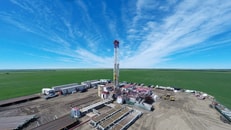Shortages of specialty gases & chemicals needed for chip expansions
Today’s semiconductor chip shortages have alarmed consumer and chip companies alike. Fabricators such as Intel, Micron, Texas Instruments, GlobalFoundries, and others continue to battle the fight between needing to increase production and a strained supply-chain. The US CHIPS Act funding was recently approved but this will not be enough to resolve the strain without a concerted effort to boost US manufacturing capacity of semiconductor process materials. Limitations on key gases and chemicals are happening today that limit the increase in chip production, and the situation is expected to get worse.
Materials shortages are stemming mainly from materials companies hesitant to invest in increasing their production ahead of fast-growing demand from chip fabricators (Fabs). But the situation has been exacerbated by the following events: the Russia-Ukraine conflict, rising prices of energy, limited materials production capacity, rising raw materials costs, and the impact of Covid-19 on consumer demand for electronics and logistics. Because of these events (amongst many others), the semiconductor materials supply chains will continue to play ‘catch up’ to accommodate the high demand for chips.
Geopolitical issues in the Russia-Ukraine region have further aggravated supply-chain concerns of raw materials. Russia is a main global exporter for metals, rare gases, and natural gas (essential for electricity), each of which are crucial to chip manufacturing. Fluorocarbons, in particular C2F6, are essential semiconductor specialty gases that are now constrained due to regional complications. One reason why supply disruptions are occurring is because key importers (like the US) have placed sanctions on Russian state-owned material companies following the Russian invasion of Ukraine. Additionally, many key Ukrainian rare gas manufacturers (neon, krypton, and xenon) are also dependent on Russia, and have had to halt their operations this year due to Russian attack threats.
Given these and other materials supply complications, TECHCET and the Critical Materials Council (CMC) have been actively tracing origins of supply-chains, and root causes of supply-chain disruptions emanating from Russia and elsewhere. Those in the Russia-Ukraine region are especially alarming since both countries are major global sources of semiconductor-grade rare gases. To put this into perspective, TECHCET estimates that 40%-50% of the world’s semiconductor-grade neon comes from Ukraine.
... to continue reading you must be subscribed





















